With the water sector deeply involved in the response to the coronavirus pandemic, WEF administered a second in a series of quick, informal polls concerning the effect of the coronavirus pandemic on the sector. The focus of this poll was to gain some general insights into the effects on the supply chain.
Responses to our first Pulse Check showed that 79% had sufficient personal protective equipment (PPE). Of some concern is the 21% that indicated they may not have sufficient PPE necessary for work. So, we dedicated to use this Pulse Check to further examine PPE needs in the water sector.
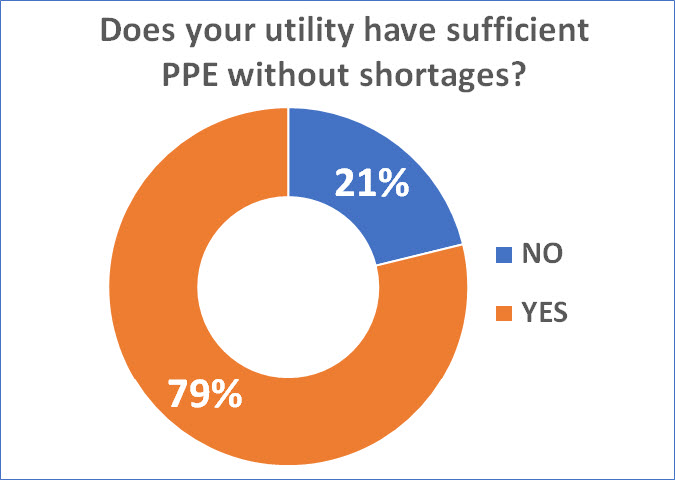
For those who answered they do not currently have adequate PPE supplies, not surprisingly, N95 respirators, face masks, face shields, and disposable gloves topped the list of needs.
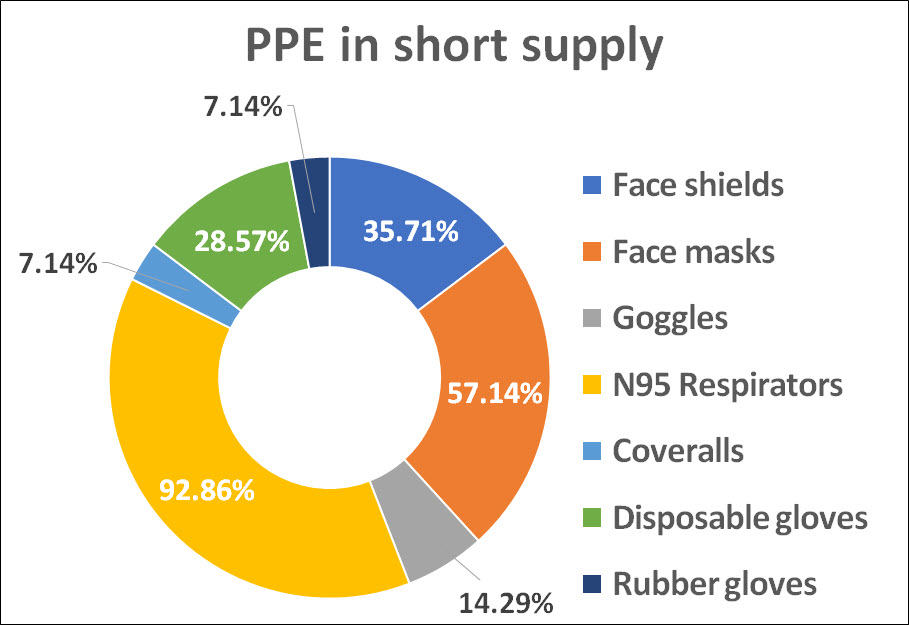
With regard to disinfectants and cleaning supplies, 70.37% of uilities and companies expressed that they have an adequate amount. For the 29.63% that needed items, the breakdown indicates wipes, hand sanitizers, and disinfectants are equally needed.
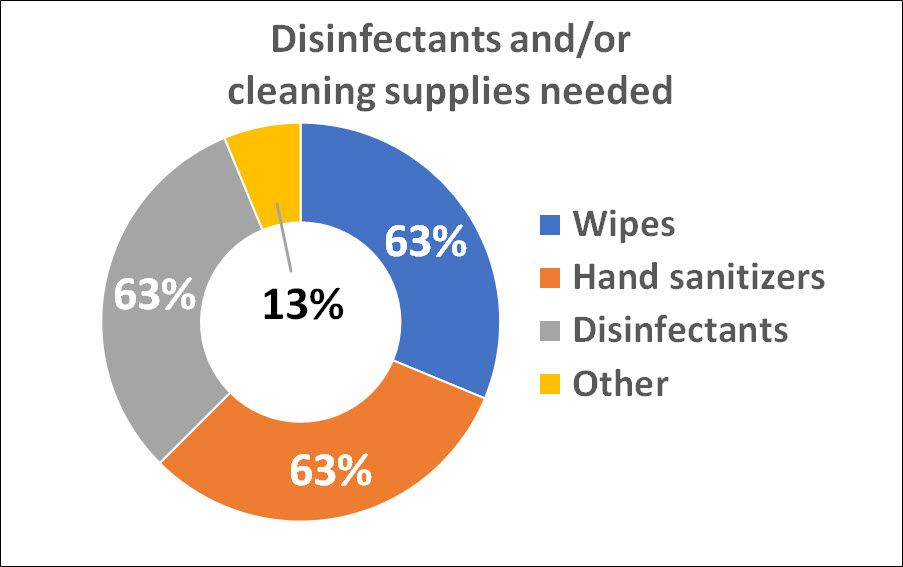
60% noted that alternative supply sources or substitute products have been identified.
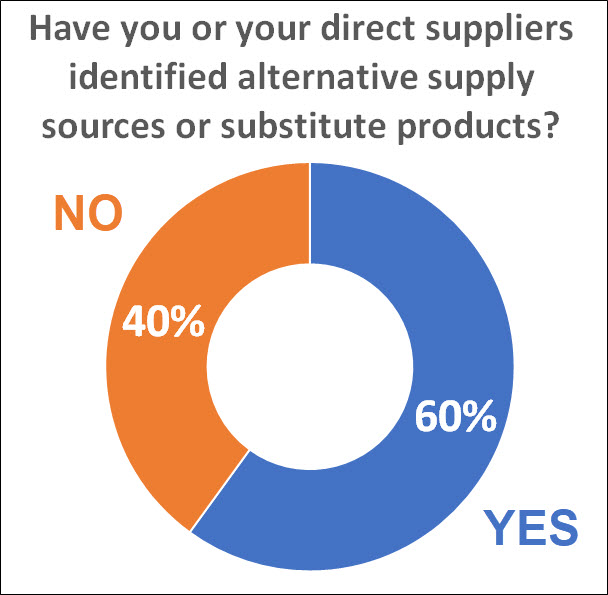
75% expressed that their organization has implemented measures to mitigate supply disruptions. On a positive note, almost 50% replied that the have a 60-day reserve for some supplies.
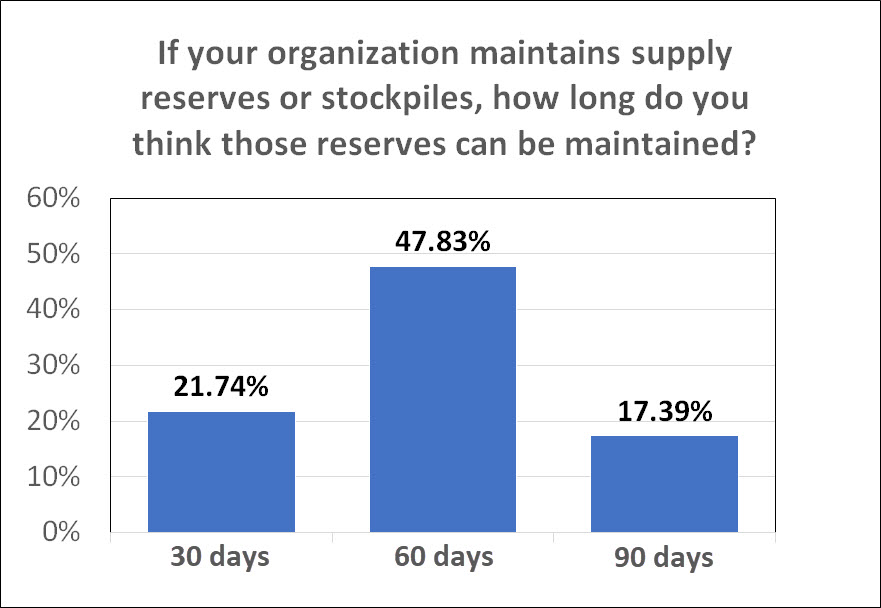
Poll respondents included 68% public utilities, 7% private utilities, 7% consultants, 4% other, and 14% technology providers.
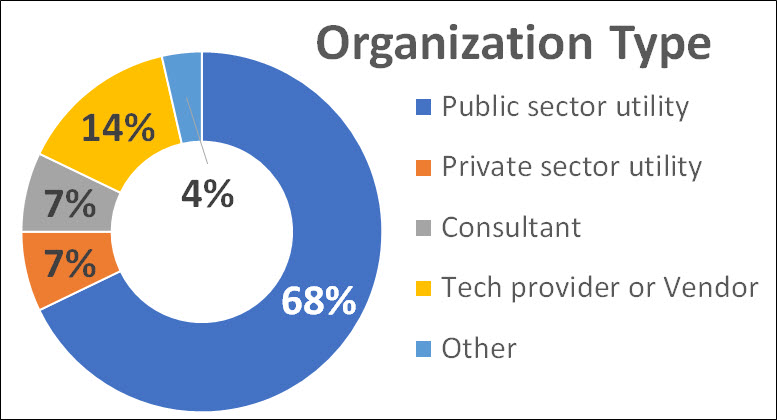
Other comments of particular note:
- While adequate supplies of disinfectant and cleaning supplies are currently available, they are dwindling and getting more difficult to procure. If demand remains high, there is potential for supply disruption within a 45-day timeframe.
- Demand for PPE for many utilities is fairly low now; however, future decisions may force personnel to begin wearing face masks when providing all services. Thus, procuring masks in the future may prove difficult.
- Many utilities have provided supplies to their communities, as well as converted technology to assist city services. For example, a laboratory sample prep area was converted into a ultraviolet sterilization chamber to support the facility, fire department, parks and recreation department, and the local hospital.
- The majority of personnel understand how to effectively use PPE and conservation efforts of materials are always in place. One respondent noted that the utility is allowing employees to take limited materials home to protect family members and employee engagement has been positive.
WEF will continue using informal polls to generate insights about key issues in the water sector, particularly during the coronavirus response.
Related Resources
Webcast: Key Considerations in Responding to Coronavirus (April 13)
During the coronavirus pandemic, water and wastewater utilities are essential for delivery of clean water during the response. As such, utilities are considered critical infrastructure providing lifeline services, even when pandemics can directly impact utility operations. Ensuring delivery of essential services while protecting human health and the environment requires strong leadership. This webcast provides insights into key considerations for decision-makers and operational staff on the frontlines.
Get the latest WEF information and resources on coronavirus:

